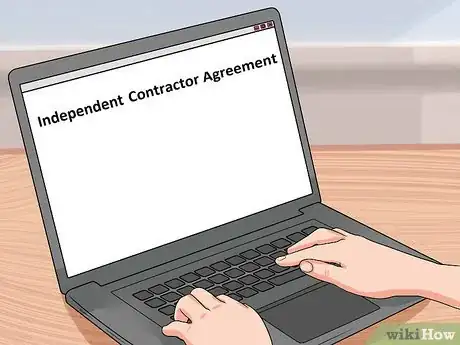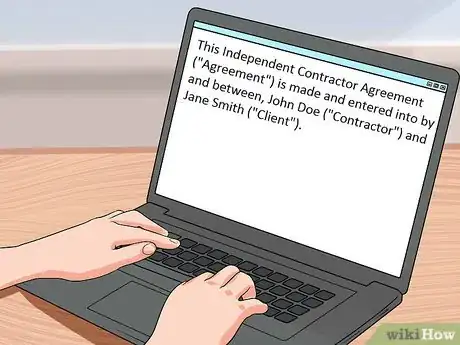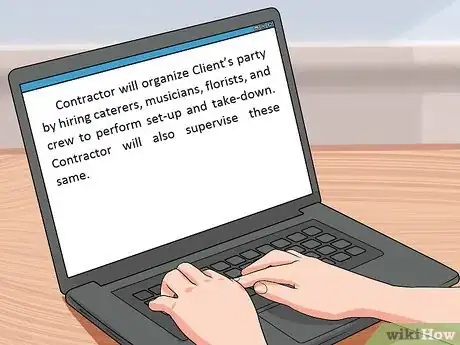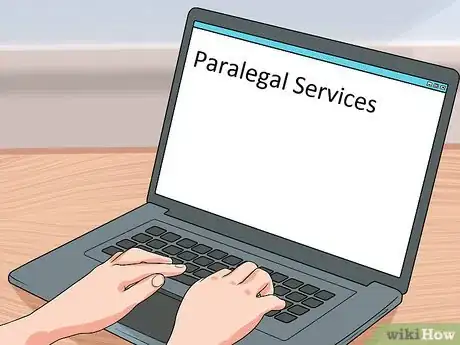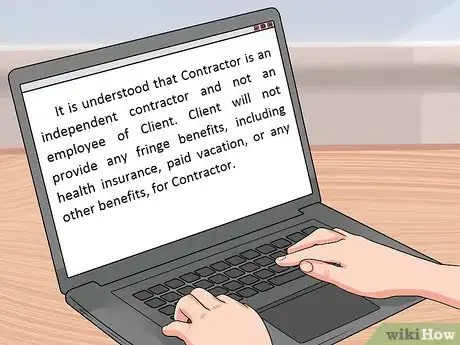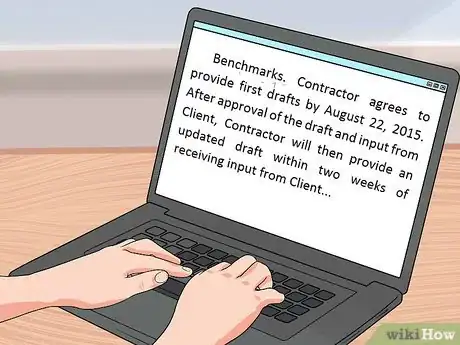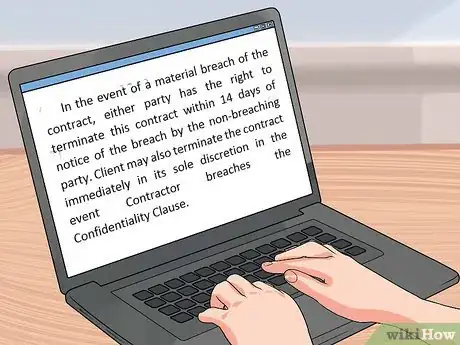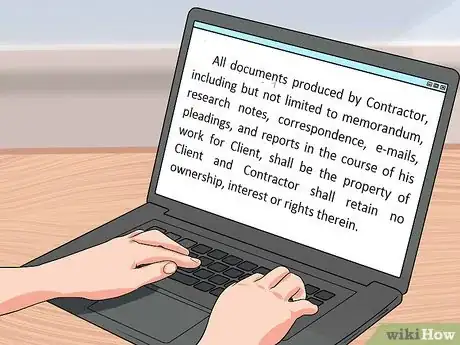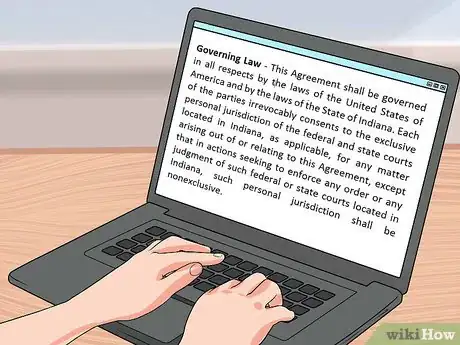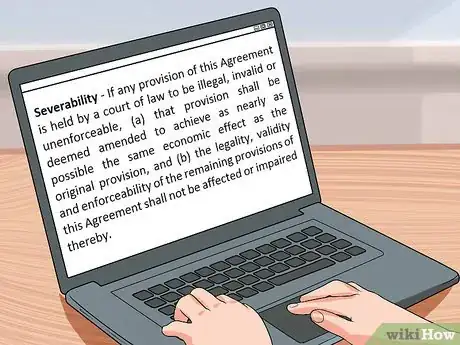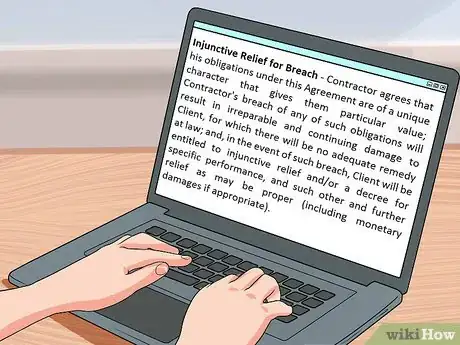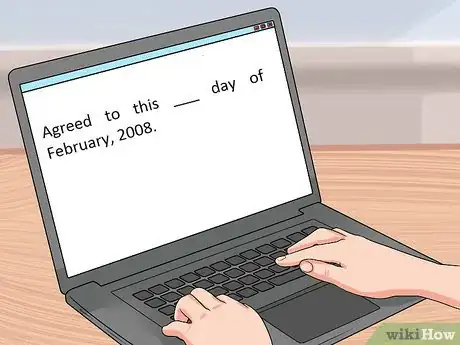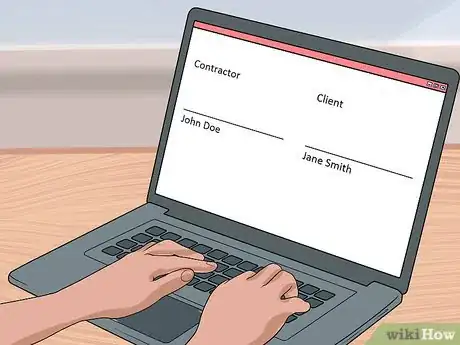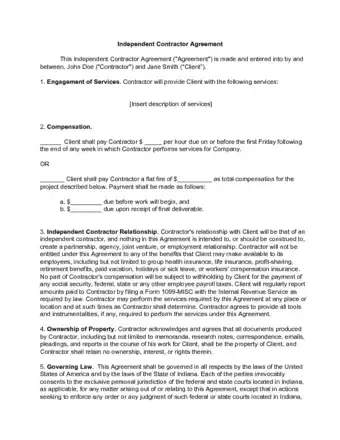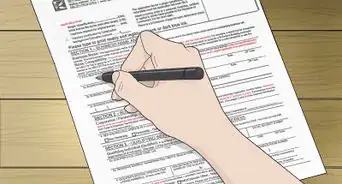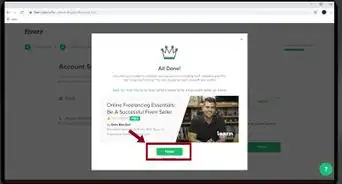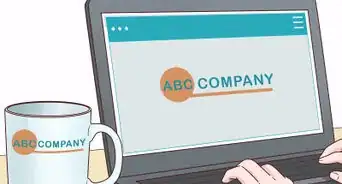This article was co-authored by Clinton M. Sandvick, JD, PhD. Clinton M. Sandvick worked as a civil litigator in California for over 7 years. He received his JD from the University of Wisconsin-Madison in 1998 and his PhD in American History from the University of Oregon in 2013.
wikiHow marks an article as reader-approved once it receives enough positive feedback. In this case, 94% of readers who voted found the article helpful, earning it our reader-approved status.
This article has been viewed 363,813 times.
If you're a freelancer, you need to understand how to draw up a business freelance contract that protects both you and your client. In your freelance contract, you should include clear guidance concerning the services to be performed and the compensation that will be paid for that work. Our guide will help you write a freelance contract that covers the essential clauses to include and provides protection for both parties!
Steps
Defining the Work to Be Performed
-
1Create a title for your contract. The title should be descriptive of the agreement, for example: Independent Consulting, Independent Contractor Agreement, or Freelance Web Design Contract. Center your title in bold type at the top of the contract like this:
Independent Contractor Agreement -
2Name the parties to the contract. After each name, include the title by which you will refer to that party throughout the contract. If dealing with a business, include its full legal name with the “Inc.” or “LLC” suffix; do not include the names of the individuals signing the contract on behalf of that business.[1] Here are two examples:
- This Independent Contractor Agreement ("Agreement") is made and entered into by and between, John Doe ("Contractor") and Jane Smith ("Client").
- John Doe ("Contractor") and Jane Smith ("Client") agree as follows: . . .
Advertisement -
3Provide a description of services. The length of the description will depend on the complexity of the job. There is no reason to make the description more complicated than necessary. Nevertheless, you should define the scope of work with sufficient clarity that the client knows the work he or she will be getting and you know what work falls inside or outside the contract.
- “Contractor will help Client throw a party” is too broad. Will you provide food and music, or will you simply hire caterers and musicians to provide these services? Will you hire crew to set-up the party and/or provide cleanup? You need to provide sufficient detail so that the work doesn’t spiral beyond what you thought you were hired to do.
- You could write, “Contractor will organize Client’s party by hiring caterers, musicians, florists, and crew to perform set-up and take-down. Contractor will also supervise these same.”
- Sometimes a short description will work. This works best for businesses that provide services that can be summarized in a brief paragraph. For example, a social media consultant might describe the job as follows: “Setting up and maintaining social media accounts for Client with Facebook, Twitter, and LinkedIn. Developing and implementing social advertising campaign, and training current staff to continue with social marketing efforts.”
- If you can use a short description, then you might want to type: "Contractor will provide Client with the following services:" and then leave some blank lines or space. By doing this, you can reuse the same contract for multiple jobs. With each new job, you can just type or write in the description.
- “Contractor will help Client throw a party” is too broad. Will you provide food and music, or will you simply hire caterers and musicians to provide these services? Will you hire crew to set-up the party and/or provide cleanup? You need to provide sufficient detail so that the work doesn’t spiral beyond what you thought you were hired to do.
-
4Do not be overly detailed if it isn’t necessary. Some tasks are self-explanatory. If you are confident there will be no dispute over what work is to be performed, you may want to use general terms for this section of the contract.
- An example of general terms (as opposed to specific) would be to say "paralegal services," "secretarial services," or "consulting," instead of describing all of the functions of a paralegal, secretary, or consultant.
- Using general terms will allow you to leave this section unchanged from contract to contract, thereby reducing errors, and speeding up the process of producing a contract for each client.
-
5Attach project plans and specifications for highly technical work. If you provide a service that relies heavily on technical or design specifications, describing a project in your freelancing contract may mean your contract is several pages long and changes drastically from one client to the next. For services such as this, you may want to describe the job as providing client with "services described in the attached project plan."
- By doing this, you can then attach each client’s personal project plan to his or her contract. Using this format gives you the flexibility of describing each job in detail without having to change your entire contract for each new job.
Defining Specifics of the Work Relationship
-
1Specify compensation. Include the compensation you will receive and in what manner and time frame it is due. You may choose to use either flat or hourly rate methods, or include both. For example:
- “Client shall pay Contractor $ _____ per hour due on or before the first Friday following the end of any week in which Contractor performs services for Company.”
- “Client shall pay Contractor a flat fee of $__________ as total compensation for the project described below. Payment shall be made as follows: a. $_________ due before work will begin, and b. $_________ due upon receipt of final deliverable.”
-
2Include a description of the work relationship. Specify that you are a freelance or contract worker and will perform the services at the time, place, and in the manner of your choosing.[2] Because employees and contract workers are treated differently for tax purposes, a description of the working relationship will help ensure that no mistake is made regarding whether you are a freelancer or an employee.
- Sample language could be: "It is understood that Contractor is an independent contractor and not an employee of Client. Client will not provide any fringe benefits, including health insurance, paid vacation, or any other benefits, for Contractor."[3]
-
3Outline a project schedule. Where applicable, the contract should lay out the steps and expected time frames for the project. A web development contract, for example, might specify development milestones, and testing and acceptance periods.
- A sample project schedule could say, "Benchmarks. Contractor agrees to provide first drafts by August 22, 2015. After approval of the draft and input from Client, Contractor will then provide an updated draft within two weeks of receiving input from Client..."
-
4Agree to circumstances for termination of the contract. It may be helpful to specify on what grounds either party could terminate the contract, such as missed deadlines or missed payments. In this case, the party has the right to terminate the contract without violating the contract.[4]
- For example, you could add, “In the event of a material breach of the contract, either party has the right to terminate this contract within 14 days of notice of the breach by the non-breaching party. Client may also terminate the contract immediately in its sole discretion in the event Contractor breaches the Confidentiality Clause.”[5] Or revise this language to reflect the grounds for termination that you and the Client agree to.
-
5Describe who will own any product you create, produce, or invent. Forms, recipes, research, memorandum, graphics, and software are generally owned by the client. You want to be clear and specific about who owns what.
- "Including but not limited to," is a good phrase to use in this section of the contract. For example: "all documents produced by Contractor, including but not limited to memorandum, research notes, correspondence, e-mails, pleadings, and reports in the course of his work for Client, shall be the property of Client and Contractor shall retain no ownership, interest or rights therein."
Finalizing the Contract
-
1Determine if you will need a confidentiality clause. If you will be performing services that make you privy to information that is confidential, such as legal or medical files, secret formulas or recipes, or a client's financial or personal information, you should include a confidentiality clause.
- A typical confidentiality clause contains the definition of "confidential information," prohibits disclosure generally, identifies exceptions (such as disclosure required by law), and states the duration of the confidentiality obligation.
- For example: “Contractor acknowledges that he/she may be furnished with information relating to Client’s products, vendor lists, creative works, business or marketing strategies, pending projects, and other confidential information. Contractor agrees not to disclose this confidential information unless required by law or court order. This duty to maintain confidentiality shall continue throughout the life of the contract.”
-
2Include a choice of law clause. You should specify which law will govern the contract. Generally, people choose the laws of the contractor’s state of residence, but you could also choose the client's state laws. Choose one state only, and specify where you will mediate, arbitrate, or bring legal actions under the contract should a dispute arise.[6] A choice of law clause may look like this:
- Governing Law - This Agreement shall be governed in all respects by the laws of the United States of America and by the laws of the State of Indiana. Each of the parties irrevocably consents to the exclusive personal jurisdiction of the federal and state courts located in Indiana, as applicable, for any matter arising out of or relating to this Agreement, except that in actions seeking to enforce any order or any judgment of such federal or state courts located in Indiana, such personal jurisdiction shall be nonexclusive.
-
3Include a severability clause. A severability clause provides that if any of the terms of the contract are found to be unenforceable by a court, all other terms shall remain operative. A severability clause may look like this:
- Severability - If any provision of this Agreement is held by a court of law to be illegal, invalid or unenforceable, (a) that provision shall be deemed amended to achieve as nearly as possible the same economic effect as the original provision, and (b) the legality, validity and enforceability of the remaining provisions of this Agreement shall not be affected or impaired thereby.
-
4Describe specific relief for breach. Service contracts commonly contain a specific relief clause which allows client to seek an injunction (a judicial order that either restrains or compels specific action), should the contractor attempt to disclose confidential information in breach of a term of the contract. It may also include an order for a specific performance, should the contractor refuse to perform some duty under the contract which causes the client irreparable harm. A specific relief for breach clause may look like this:
- Injunctive Relief for Breach - Contractor agrees that his obligations under this Agreement are of a unique character that gives them particular value; Contractor's breach of any of such obligations will result in irreparable and continuing damage to Client, for which there will be no adequate remedy at law; and, in the event of such breach, Client will be entitled to injunctive relief and/or a decree for specific performance, and such other and further relief as may be proper (including monetary damages if appropriate).
-
5Include the date. This should be the date the parties will sign the contract. If you are unsure of the exact date, leave a blank line where necessary, so that the day, month, and/or year can be hand-written in when you execute the contract.
- For example, "Agreed to this ___ day of February, 2008."
-
6Create a signature block. Each party should have a line to sign on, plenty of room to sign, his or her title listed, and his or her typed name below the line.
-
7Format your contract. Each section of your contract should be numbered, and have a section title in bold type. See the sample contract for examples of bold section headings.
Sample Contract
Warnings
- If in doubt, have your contract checked. Save a Fortune on Agreements and Contracts is a good start.⧼thumbs_response⧽
- This article provides legal information only, not legal advice.⧼thumbs_response⧽
- You should consult with an attorney before signing anything that may affect your legal rights and obligations.⧼thumbs_response⧽
References
- ↑ http://www.nolo.com/legal-encyclopedia/make-business-contract-agreement-30313.html
- ↑ https://www.upwork.com/legal/contractor-policies/
- ↑ https://www.rocketlawyer.com/form/independent-contractor-agreement.rl
- ↑ http://www.nolo.com/legal-encyclopedia/make-business-contract-agreement-30313.html
- ↑ https://www.upwork.com/legal/contractor-policies/
- ↑ http://www.nolo.com/legal-encyclopedia/make-business-contract-agreement-30313.html
